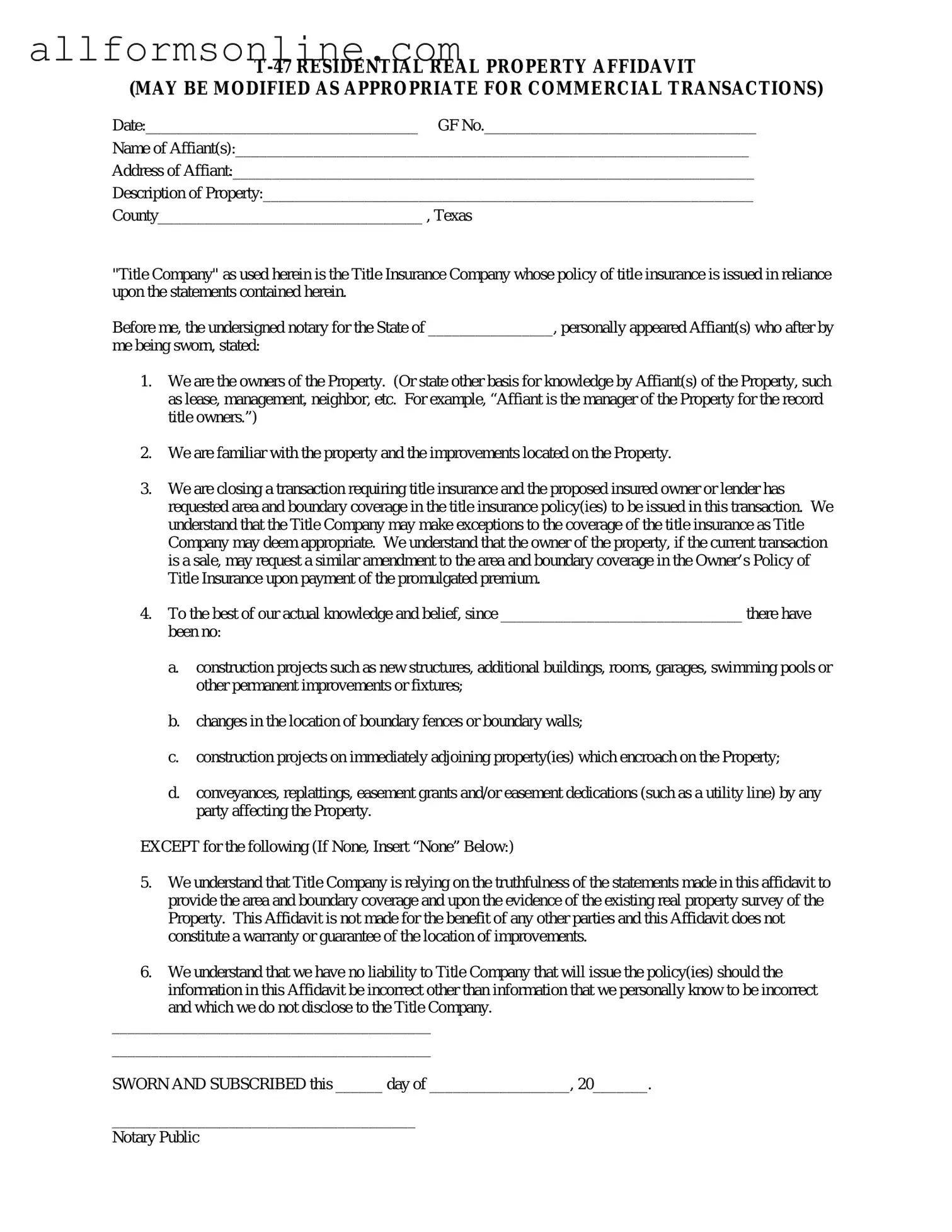The Texas residential property affidavit T-47 form is a document used in real estate transactions. It serves to confirm the ownership and condition of a property, particularly when a lender requires evidence of the property’s status during the closing process. The form can help clarify any issues related to the property title.
The T-47 form is typically completed by the property owner or seller. It is often required by lenders or title companies to ensure that the property is free from liens or other encumbrances that could affect ownership rights.
What information is included in the T-47 form?
The T-47 form includes details about the property, such as its legal description, the owner's name, and any known issues affecting the property. It may also require the owner to affirm that there are no outstanding liens or claims against the property.
How does the T-47 form affect the closing process?
The T-47 form can expedite the closing process by providing necessary information to the lender and title company. By confirming the property’s status, it helps to ensure that the transaction proceeds smoothly without delays related to title issues.
Is the T-47 form legally binding?
Yes, the T-47 form is a legally binding document. By signing it, the property owner affirms that the information provided is accurate. Misrepresentation on the form can lead to legal consequences, including potential liability for damages.
Can the T-47 form be modified?
While the T-47 form itself is standardized, the information contained within it can be modified to reflect the specifics of the property and the transaction. However, any changes should be made carefully and may require re-signing the document.
Where can I obtain a T-47 form?
The T-47 form can typically be obtained from title companies, real estate agents, or online legal document services. It is important to ensure that you are using the most current version of the form to comply with Texas regulations.
What should I do if I have questions about the T-47 form?
If you have questions about the T-47 form, consider consulting with a real estate attorney or a qualified title company. They can provide guidance on how to complete the form correctly and address any concerns you may have about its implications.
Can I use the T-47 form for commercial properties?
The T-47 form is specifically designed for residential properties. For commercial properties, different forms and affidavits may be required. Always check with your lender or title company for the appropriate documentation needed for commercial transactions.
